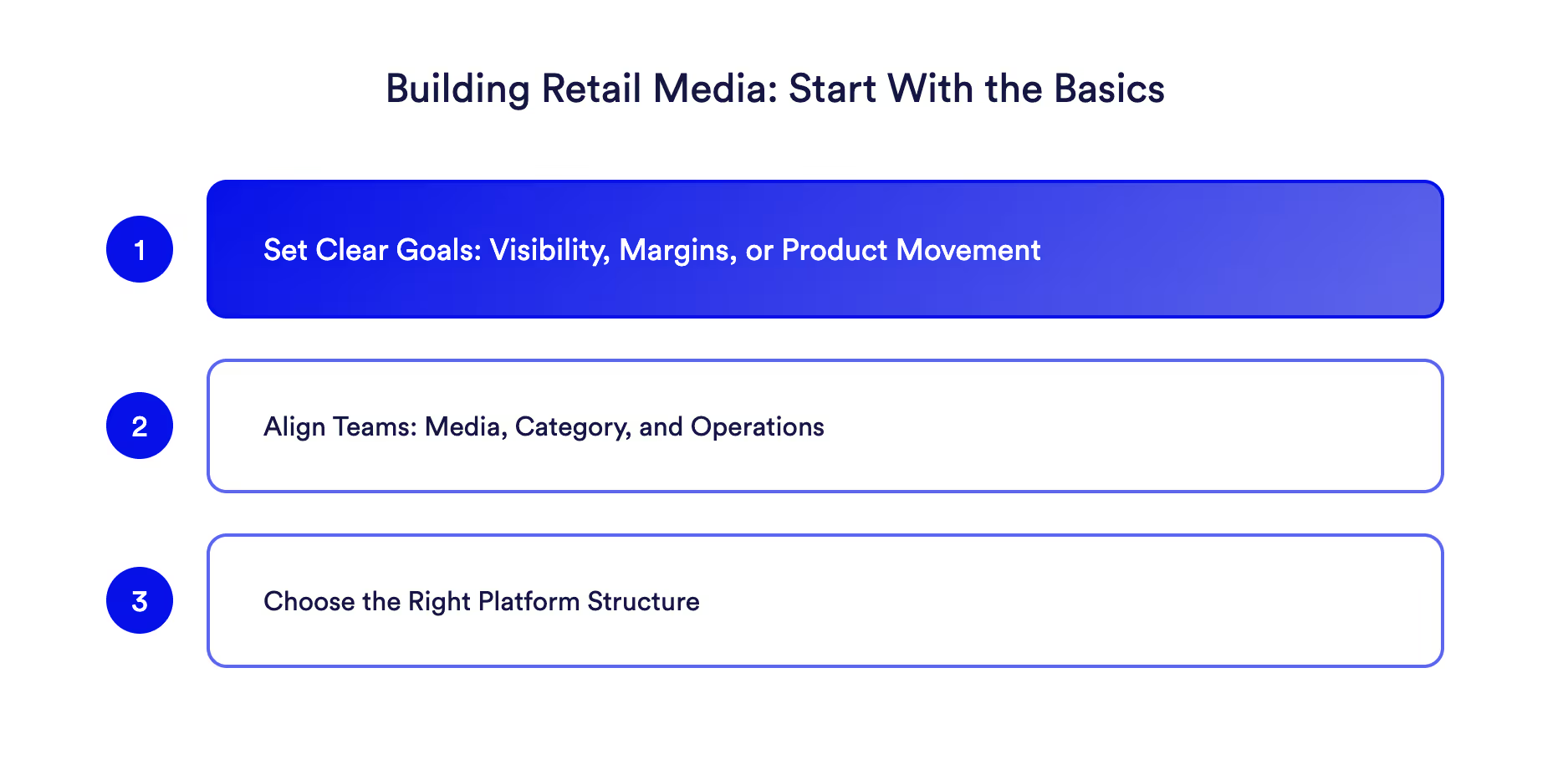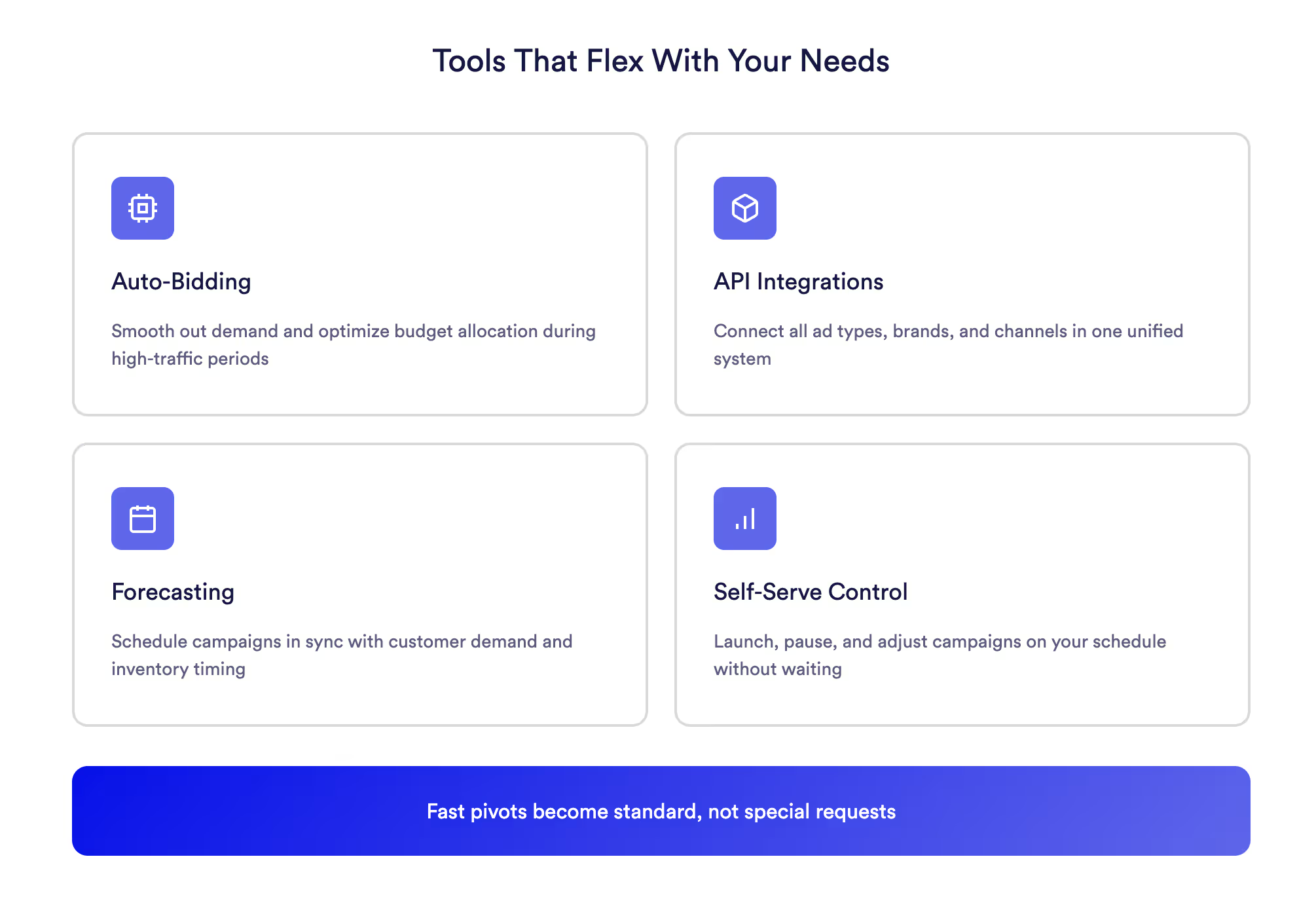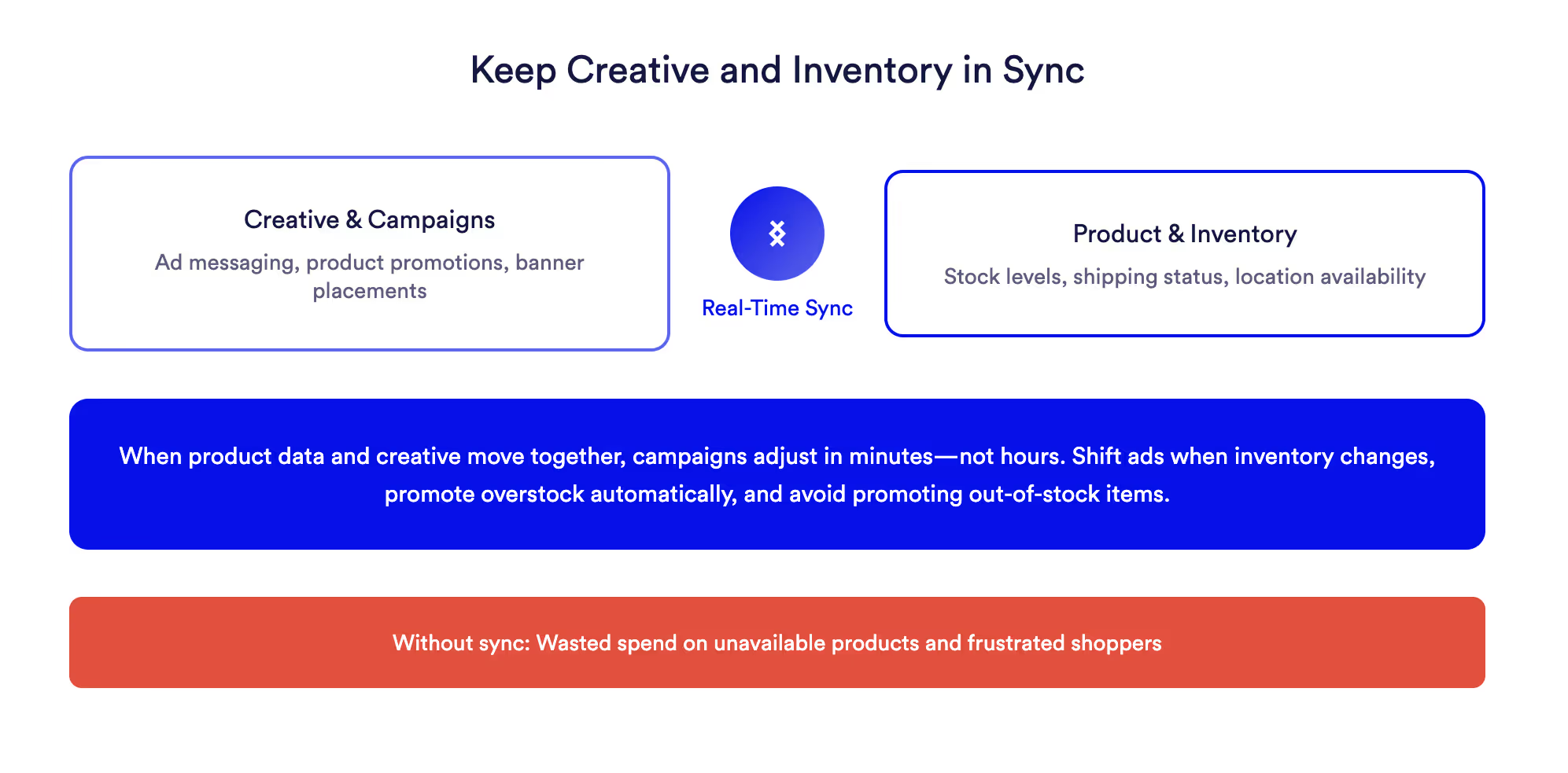
Introduction
More brands are stepping into retail media every season, trying to build better campaigns and connect with key shoppers. Jumping into this space without a clear setup creates stress instead of results. It’s easy to get lost when things feel scattered or when changes take too long. That’s where a solid structure saves the day.
A retail media platform keeps all the parts working together, providing a single place to manage, schedule, and track performance without needing to bounce between tools or manually complete steps. As the holiday season approaches and the pace picks up, what matters most is a platform ready to move without overload. The right system brings control, allowing brands to run things simply and clearly, so effort is directed toward moving campaigns forward—not untangling problems.
Start With the Basics Before You Scale
It can be tempting to go big right from the start. But before adding more brands, formats, or channels, hitting pause to lay out the basics saves trouble later. Retail media is more than placing ads. It’s building how budgets, campaigns, and product placements connect brands and retailers in a way that moves the needle for both.
This starts with clear goals. Is the aim more supplier visibility? Stronger margins? Pacing more products through each store? Setting this early keeps teams focused during crunch time.
Success depends on everyone moving together. If media, category, and operations teams don’t sync up, gaps show up fast. Getting everyone on the same page makes launches smoother and stops problems before they overwhelm the season.

Choose Tools That Can Flex With You
Speed matters most when holidays tighten timelines. That’s why tools need to flex. Self-serve doesn’t mean giving up control. It means launching, pausing, and adjusting on your schedule, not waiting for tickets or outside help.
The right retail media platform should work for every ad type, brand, and sales channel. If you want sponsored placements this week and shift to banners next, it’s a quick adjustment in the same system. Fast pivots become standard, not special requests.
During spikes, tech features like auto-bidding help smooth out demand and avoid burning budgets too early. Forecasting tools help schedule campaigns in step with what customers want. A good setup supports quick planning and simple execution, using smart tools like auto-bidding and API integrations.

Don’t Let Creative and Inventory Drift Apart
One of the fastest ways to frustrate either team is to run ads for items that aren’t available or in stock. When media and inventory are out of sync, campaigns waste spend and fail to meet shoppers' expectations.
Creative and product data have to move together. If shipping is delayed, ads quickly switch to another product. Overstock can be moved more quickly by shifting creative efforts to focus on areas with the highest supply. Changing gears should take minutes, not hours, and shouldn’t require fresh creativity every time.
Tools like Toptimize use forecasting to map when product and ad timing line up. Knowing stock arrives at a particular location tells retail teams when to launch—no early misfires or missed windows. Messaging stays true and shelves stay balanced, making campaigns work without extra stress.

Use Performance Data to Build Smarter Patterns
Once the rush calms down, campaign data becomes the foundation for the next round. Tracking more than clicks means real learning—whether someone saw an ad, walked into a store, or bought off the shelf.
Key metrics to track include:
- In-store movement and shelf performance, not just digital clicks
- When product pickups climb after a banner campaign goes live
- Clear KPIs focused on what actually changes the business, not just what looks good in reports

Deciding what to measure matters. Stick with signals like store movement, digital viewability, or changes in shelf velocity. That way, the patterns you see help make better moves in the next season.
Avoid Overbuilding Before You’re Ready
Building up a system before the first real campaign ships slows everything down. Big dashboards and layers of approvals might sound like progress, but they create roadblocks that tangle even simple launches.
A retail media infrastructure should match your current needs and scale step by step. If it works well in small settings, it should continue to work effectively as the business grows. Stop short of building custom tools or adding complexity you don’t need yet. If a task takes more time to set up than to run, it requires a rethink.
Keeping it lean helps teams focus on launching, adjusting, and learning—not troubleshooting or backtracking.
Keep Moving Without Losing Control
Starting in retail media doesn’t demand a huge team or a maze of new tools. The setups with the most staying power are simple, clear, and flexible enough to move with the market. With a strong retail media platform, brands build what works for them, scale up smoothly, and keep performance in plain sight.
Programs stay easy to shape as shoppers shift. Campaigns become something you plan with and learn from season after season. When platforms carry you from one launch to the next, the future feels less like a scramble and more like a strategy you control.
When scaling fast without extra friction matters, having the right base makes all the difference. We’ve seen how much smoother campaigns run in busy seasons when everything connects easily. It starts by picking a flexible, focused retail media platform that supports smart decisions without adding bulk.
At Topsort, we bring the building blocks together so teams can move faster, stay in control, and keep growing without having to rework their process.


